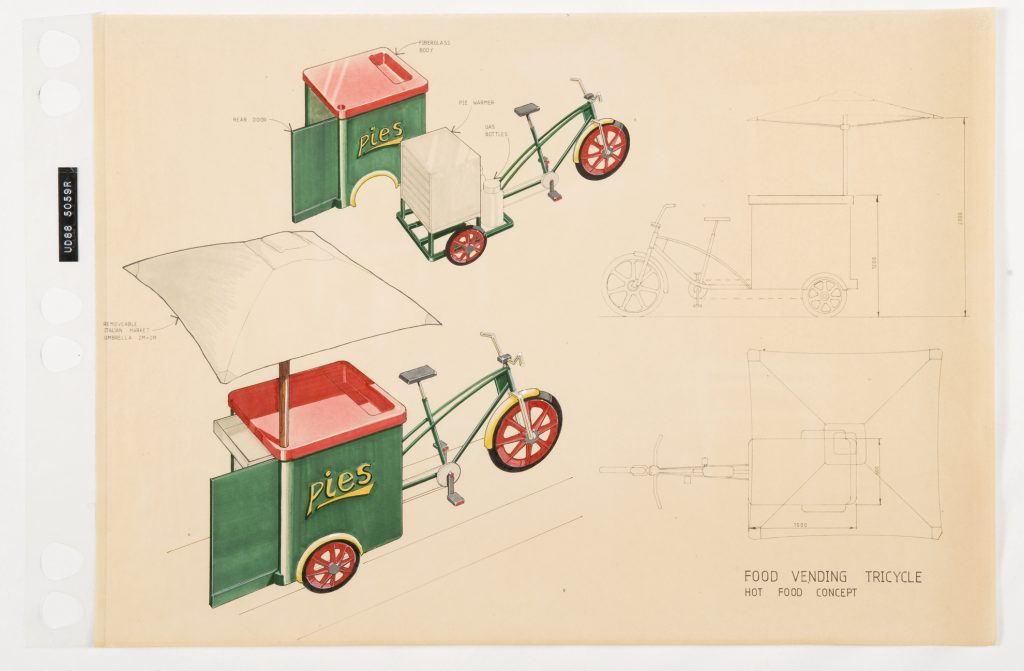Summary
Most of us likely spend little time considering the outdoor furniture and fixtures that ease our encounters with public space and enrich our experience of the city streets and parks. But industrial design at the City of Melbourne has long been recognised as a discipline essential to maintaining the quality of our urban space and to shaping the identity of the city. It is a discipline that travels in tandem with social, urban and public policy, with design outputs both responding to and reflecting changing priorities.
The Art and Heritage Collection holds a selection of the many technical drawings made by City of Melbourne industrial designers, documenting examples that can be observed throughout the central city. Unlike their peers in the private sector, the city’s designers are fortunate in that around 90 per cent of their designs make it off the page and into three dimensions to exist in real time and space.
Perhaps sadly, as it is such a charming, even nostalgic design, this vending tricycle didn’t make it to the city streets. Designed in the early 1990s, its intention was to help enliven the streets at a time when the CBD was making its transition from a dead centre to a thriving heart. The food-vendors with their mobile ‘tuck shops’ would not only physically sustain workers, but also would activate the pavements through providing small street-side social hubs. As the drawings in the collection show, the food-vending tricycle was designed in three incarnations, with the relevant technology for selling ice cream, hot dogs and pies.
